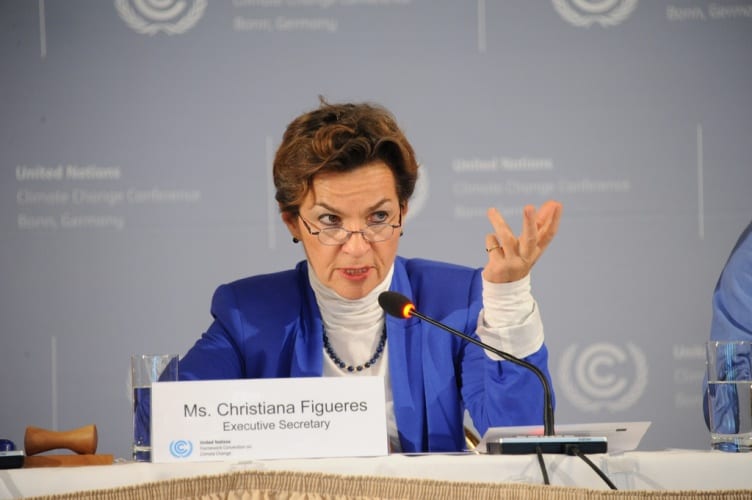Speaking at a press event in London ahead of next month’s crucial climate talks in Paris, Christiana Figueres claimed that individual agreements were already in place that would restrict warming to 3 deg C if fully implemented. It is widely accepted among the scientific community that a 2 deg C temperature shift is the limit the planet can tolerate if the worst effects of climate change are to be avoided.

“There’s nobody out there that wants a 3 degree world,” said Figueres. “Nobody.”
“We are not giving up on a 2 degree world. In fact, we’re staying under 2 degrees. And what we’re doing is we are building a process that is going to get us there.”
After the debacle of the Copenhagen climate talks in 2009, significant progress has been made in expanding renewables globally and taking important steps towards decarbonisation. The shale gas revolution in the US has decreased demand for coal there, and Figueres says China’s coal use is estimated to peak around 2020.
Where developed and emerging nations clashed in 2009, there now appears to be greater consensus in the run up to Paris 2015. Draft agreements have been in progress for over a year, and between 80 and 100 heads of state will be in attendance at the conference when it begins on November 29. This contrasts with previous summits where heads of state have arrived at the end of talks, by which point any chance of agreement has often already been scuppered.
Much of the heavy-duty groundwork has already been laid, and 155 INDCs (intended nationally determined contributions) are already in place, covering 88 per cent of global greenhouse emissions. According to Figueres, these agreements are the foundation of a path to 3 deg C change, and Paris will help cement them in place and extend them beyond 2030. But she admits that more is needed if we are to stay within the 2 degree limit, and this is another aspect of the Paris talks.
Alongside the main agreement – which even if talks are successful will not come into force until 2020 - a “ratchet mechanism” to progressively increase efforts is also on the agenda. Part of the summit will also look at measures that can be taken before the 2020 start date. Known as Workstream 2, it will focus on the immediate action required to steer us from the worst effects of climate change.
In this respect, Figueres believes that science and technology has a key role to play. She says humanity’s ingenuity - and the increasing flexibility of capital to embrace new technologies - can shift us to a path that ultimately leads to carbon neutrality and an ecologically balanced planet.
“We continually underestimate the power of technology, the speed with which capital can move over, and above all, we underestimate human ingenuity,” Figueres said. “So I think one of the most powerful outcomes of Paris is that it’s going to focus human ingenuity on what seems now as an absolutely invincible challenge.”
“It is not invincible. If we have already brought the extended temperature from 4-5 deg C to under 3, we already have evidence that we can do this.”




Red Bull makes hydrogen fuel cell play with AVL
Formula 1 is an anachronistic anomaly where its only cutting edge is in engine development. The rules prohibit any real innovation and there would be...